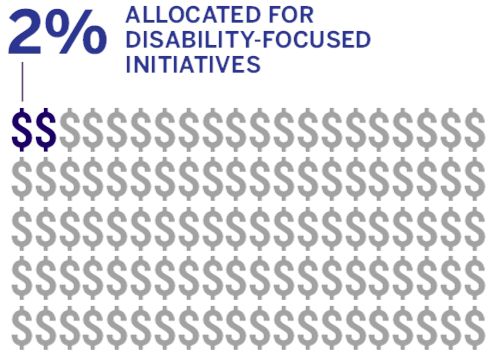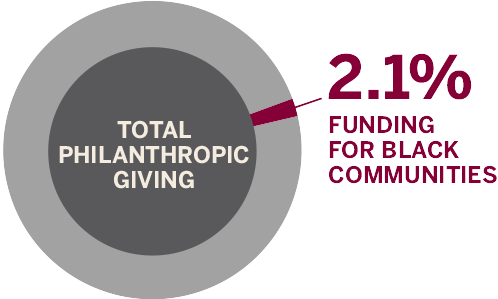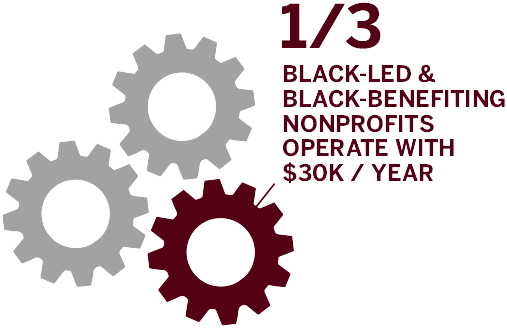FOR FUNDERS
Funding Black Disabled Liberation
In the United States, the abandonment of Black and disabled communities is historical tradition. The philanthropic sector has largely exacerbated this reality, upholding ableism and anti-Black racism through funding practices that deem grassroots Black-, and disabled-led organizations risky investments.

Only 2% of total philanthropic giving is allocated for disability-focused initiatives.

Despite an uptick in resource mobilization in response to the racial justice uprisings of 2020, funding for Black communities still represents only 2.1% of philanthropic giving overall.

A majority of Black-led and Black-benefiting nonprofits operate on less than $500,000 a year, with nearly one-third operating with just $30,000 a year.
Institutional philanthropy’s approach to disability, too, has long been based on charitable giving approaches rooted in White supremacist, anti-Black, ableist and patriarchal ideologies. This has resulted in the prioritization of funding for large, White, and able-led direct service models. According to recent data, 94% of all disability-focused dollars are allocated towards “Disability Services and Supports,” while only 6% funds the work of “Disability Justice,” or radical, liberatory, systems-change efforts. This weaving of bias and erasure has resulted in a dearth of funding for Black and disabled communities, and particularly for folks living and organizing at the intersection of both identities.